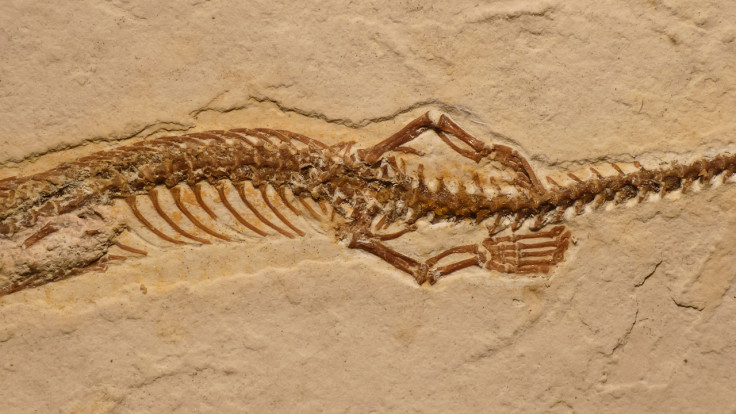Four-legged 'snake' fossil with clasping arms could be oldest one known

An "absolutely exquisite" fossil of a four-legged tiny reptile has set off debates on whether the 110-million-year-old specimen is the oldest known snake or a lizard or an amphibian.
The study led by University of Portsmouth has however concluded the find, named Tetrapodophis amplectus, is the oldest definitive snake that proves the reptiles evolved from burrowing lizards and not marine ones.
The length of the body, teeth pattern and belly scales are said to point to a snake rather than a lizard.
The specimen is that of a tiny juvenile measuring 20cm from head to toe with two sets of legs (or a pair of hands and feet) sporting elbows, wrists and digits.
The specimen also sports a skull the size of a human fingernail, 160 spinal vertebrae, and 112 vertebrae in the tail.
The fossil also revealed the remains of the snake's last meal in its guts, which was probably a salamander, showing that snakes were carnivorous much earlier than believed.
The front legs are just a centimetre long, with little elbows and wrists and palm that are just 5mm in length.
The back legs are slightly longer and the feet are larger than the hands. This could have been used to grasp its prey, say the team.
Dr Dave Martill, who led the team, says the discovery could help scientists understand how snakes lost their legs.
It was during a field trip with students to Museum Solnhofen in Germany that he stumbled across the specimen which was part of an exhibition of fossils from the Cretaceous period.
Dr Martill worked with expert German palaeontologist Helmut Tischlinger, and Dr Nick Longrich from the University of Bath's Milner Centre for Evolution.
It is a perfect little snake, Dr Longrich said, "So when snakes stopped walking and started slithering, the legs didn't just become useless little vestiges – they started using them for something else. We're not entirely sure what that would be, but they may have been used for grasping prey, or perhaps mates."
But doubts have been voiced over the find, reports Science.
Snake or snakelike?
The front surface of living and fossil snakes and lizards are concave, with the rear side being convex. But the Tetrapodophis does not conform to this.
It also does not have a small bone called an intercentrum in the vertebrae which is common in the known reptiles.
Michael Caldwell, a vertebrate paleontologist at the University of Alberta, Edmonton believes its vertebrae resemble those of a large group of extinct amphibians that died out during mass extinctions about 251 million years ago.
He is also doubtful about the specimen's long feet which he believes are "remarkably unusual unless you're a tree-climber."
Susan Evans, a paleobiologist at University College London also voiced uncertainty about the specimen while admitting its teeth look snakelike.
Analysing the limestone that entombed the fossil, as well as the distinct orange-brown colour of the bones themselves, the team believes it came from northeastern Brazil.
The findings are published in the journal Science.
© Copyright IBTimes 2025. All rights reserved.





















